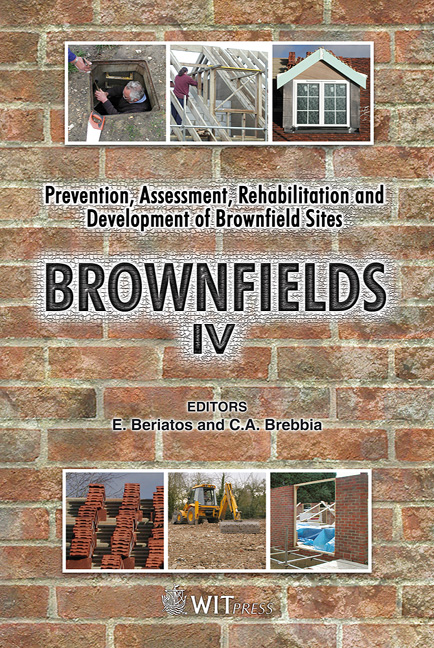A Unique Approach To Addressing Brownfield Sites
Price
Free (open access)
Transaction
Volume
107
Pages
8
Page Range
201 - 208
Published
2008
Size
258 kb
Paper DOI
10.2495/BF080201
Copyright
WIT Press
Author(s)
V. Pitruzzello
Abstract
The purpose of this paper is to describe the unique approach used by EPA Region 2 in providing expertise at the federal and state government levels to communities with brownfield sites. This approach can serve as a \“model” for such programs elsewhere by illustrating how EPA Region 2’s program has fostered and encouraged brownfields re-use by utilizing and combining various funding, administrative and technical resources available at the \“state” and \“national” level to address local brownfields issues. The U.S. Environmental Protection Agency’s (EPA) Brownfields program began in 1993 with a small number of grants to municipalities. A report by the General Accountability Office estimated that there are nearly 450,000 brownfield sites in the United States. These grants were \“pilots” at the time – the purpose of which was to test the process for getting brownfields identified, characterized, remediated and eventually redeveloped. In January 2001 the \“Small Business Liability Relief and Brownfields Revitalization Act” was signed establishing the Brownfields legislation and moving the pilot/initiative program into a fully recognized self-standing program. Initial funding for the program had been $400,000 and rose steadily during the pilot phase. With the enactment of legislation, the funding level rose to over $165 million. Grants are provided to communities for the purpose of identifying brownfield sites and for site remediation. Funds are provided to states to develop state programs. EPA Region 2 includes the States of New York and New Jersey, seven tribal nations, the Commonwealth of Puerto Rico and the U.S. Virgin Islands. The challenges to the Brownfields program are varied across the wide range of regional municipalities, from densely populated cities, to small hamlets, to tribal lands and to tropical communities. To address this variety, the Region 2 Brownfields program has developed a unique partnership with a number of Federal and State government agencies. We have formed an Interagency Workgroup (IAWG) that has over 40 partner agencies that bring member resources to assist individual communities. We have brought such assistance to over 140 communities. This presentation will illustrate some of the challenges and successes experienced by EPA Region 2 throughout this unique process and offer a model for brownfields programs throughout the world. Keywords: brownfields, Environmental Protection Agency, Interagency Workgroup, hazardous waste sites, hazardous cleanup, redevelopment, United States.
Keywords
brownfields, Environmental Protection Agency, Interagency Workgroup, hazardous waste sites, hazardous cleanup, redevelopment, United States.




